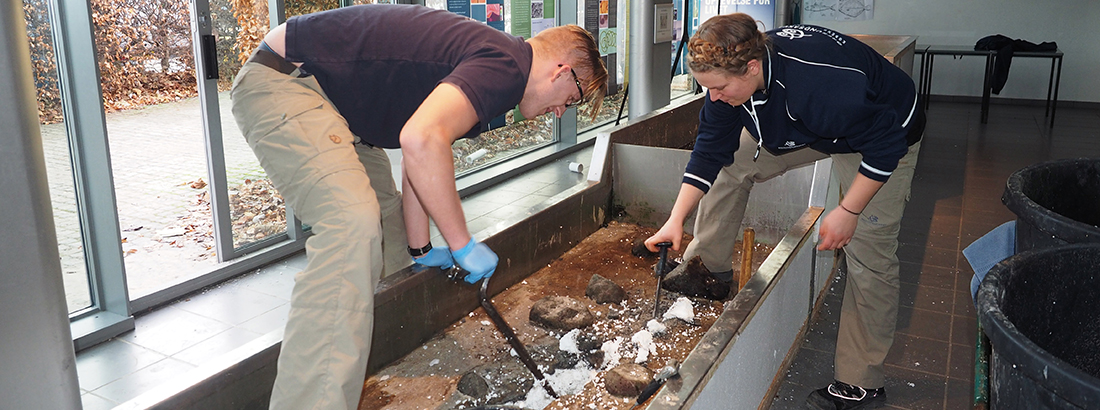
Backstage
Kristian, head zookeeper at the Øresund Aquarium, says:
We start every day by cleaning the inside glass of the tanks, vacuuming up excess fish feed from the tank bottoms, and removing individual animals that are either ill or injured. The fish can be very rough towards each other. The injured and diseased fish are moved to a self-contained unit where they are treated.
In some instances, animals are also removed from the audience tanks, for example if they are pregnant. Some marine animals lay their eggs or give birth in cold water, while others prefer hot water. Therefore, these animals must be isolated from other creatures during spawning. Not only because this requires different water temperatures, but also to give them the peace and quiet to spawn or feed their offspring.
Molting
Besides many fish, the Øresund Aquarium also has a lot of crustaceans, from big lobsters to sizeable brown crabs. When crustaceans grow, they must part with all their outer shell, a process called molting. This is because they have an exoskeleton (an outer shell), and in order to grow, they must shed their shell. Molting only takes about 20-25 minutes, but it takes about 5-7 days before the new shell is properly hardened. In nature, crustaceans will naturally seek shelter in a cave where they remain until their new shell is sufficiently hardened. But here in the Aquarium, we need to isolate these exposed creatures while their shells are still soft, otherwise other fish will bite the crustaceans to pieces. This is why we keep an eye on our big crustaceans every day, and if they begin to show aggressive behavior, it’s time to move them so they can shed their shells in peace.
Feeding
To ensure that our animals survive for as long as possible in our tanks, we need to feed them with fish feed that is as natural to them as possible. For example, our octopuses require live food if they are to thrive and live for a long time. This is why they are given live crabs and fish every day, which we catch for them also during wintertime.
Water temperature
In Øresund (the Sound) there is a difference in temperature from surface to seabed and from summer to winter. Therefore, our sea creatures in captivity also require different temperatures of water, depending on where and what time of year they live in Øresund. Our water system is designed so that there is one water supply with 5C cold water, another with 8C water and a third with 12C water. This allows us to place the different animals in their natural environment. Sea creatures that require even warmer water, such as our octopuses, rely on a specially designed heating pipe through which cold water is warmed to 18C degrees, the temperature where octupus thrive best.
Seaweed and algae
We seek to give visitors to Øresund Aquarium a natural experience of conditions at the seabed of Øresund. For the tanks to look natural, a good algae growth is necessary on the stones and tank background. Algae and seaweed growth not only contributes to making the tanks look natural but also provides an ambient where the sea creatures can hide. However, many species of seaweed cannot grow in tanks, which is why changing the seaweed once a week is necessary all year round. This is done by diving from our boat with diving suits to collect beautiful seaweed plants from the sea. Back at the Aquarium, we replace the old seaweed with the new plants. When placing the seaweed in the tanks you also need a little creative talent to make it all look natural.
